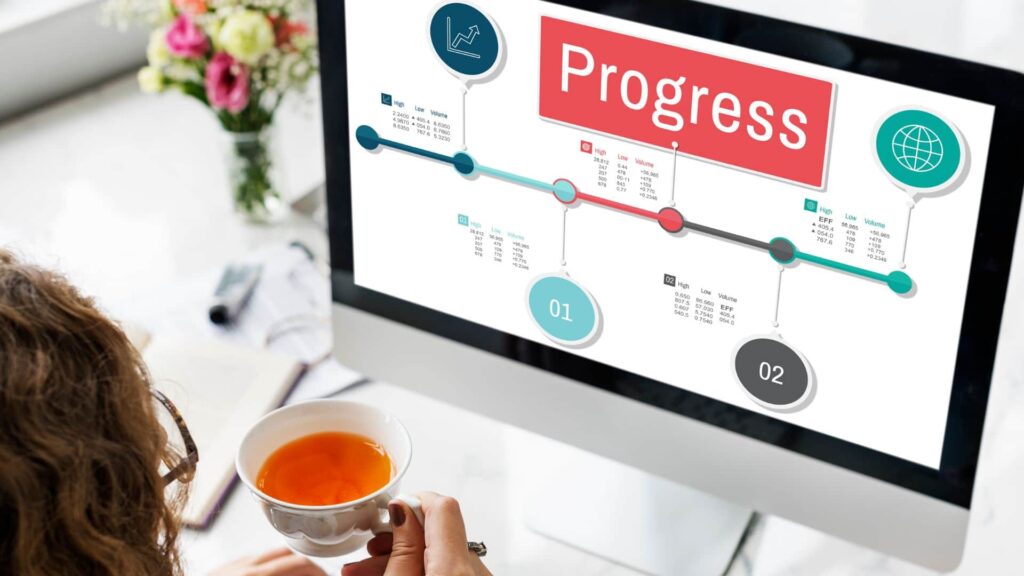In the dynamic realm of software development, a structured and systematic approach is imperative. It ensures that projects are executed efficiently, maintaining high standards of quality while minimizing errors and setbacks. Central to this methodology is the Software Development Lifecycle (SDLC). This guide seeks to unravel the intricacies of SDLC, offering insights into its phases, best practices, and its potential to revolutionize your development process.
Understanding the Software Development Lifecycle (SDLC)
The Software Development Lifecycle (SDLC) serves as the foundational framework that orchestrates the creation, maintenance, and eventual phasing out of software applications. It is a meticulously designed sequence of phases, each with a distinct purpose, collectively steering the development journey.
The Six Key Phases of SDLC

Requirement Gathering and Analysis
At the inception of a project, the crucial task of gathering and meticulously analyzing project requirements is undertaken. This phase lays the cornerstone for the entire development process, establishing a clear and comprehensive understanding of stakeholder expectations.
Best practices for effective requirement gathering: This involves engaging stakeholders at various levels, utilizing interviews, surveys, and workshops to extract detailed and unambiguous requirements. Employing tools like Use Case Diagrams and User Stories helps in visualizing and documenting these requirements effectively.
System Design
With requirements in hand, the next phase encompasses the design of the system’s architecture and technical specifications. This phase focuses on translating conceptualized ideas into concrete blueprints that serve as the foundation for the coding phase.
Balancing scalability, performance, and maintainability: Architects and designers must strike a delicate balance between system scalability, performance optimization, and long-term maintainability. This involves making informed decisions regarding technology stacks, database structures, and architectural patterns.|
Implementation (Coding)
The coding phase involves the actual creation of the software based on the design specifications established in the previous phase. It is the point where lines of code come to life, transforming concepts and designs into a functional application.
Embracing coding standards and best practices: Adhering to industry-standard coding conventions, employing modular and reusable code practices, and conducting thorough code reviews are critical aspects of this phase.
Testing
Rigorous testing is paramount in identifying and rectifying defects and issues that may have been introduced during the implementation phase. This phase involves a battery of tests, ranging from unit tests that examine individual components, to integration tests that assess interactions between modules, and acceptance tests that verify whether the system meets the specified requirements.
Leveraging various testing methodologies: Effective testing involves a combination of methodologies such as unit testing to validate individual components, integration testing to ensure seamless collaboration between different modules, and acceptance testing to confirm that the software meets the defined criteria.
Deployment
The deployment phase marks the transition from the development environment to the live production environment. It involves meticulous planning, execution, and monitoring to ensure a seamless and error-free release.
Ensuring a smooth transition: This phase requires a well-orchestrated deployment plan that considers factors like data migration, server configurations, and contingency measures to address any unforeseen issues.
Also Read: AI for All: Unveiling the Beneficiaries of Artificial Intelligence
Maintenance and Support
Post-deployment, the software enters a phase focused on bug fixing, updates, and enhancements. Continuous monitoring and proactive customer support are integral components of this phase, ensuring the software remains robust and user-friendly.
Proactive monitoring and customer support: Utilizing monitoring tools and techniques to identify and address issues promptly, coupled with responsive customer support channels, helps in maintaining a satisfied user base.
Agile vs. Waterfall: Choosing the Right SDLC Model

In the realm of SDLC, two prominent methodologies, Agile and Waterfall, vie for supremacy. Understanding the strengths and weaknesses of each is essential in selecting the most suitable approach for your project.
Agile Methodology:
Agile emphasizes adaptability and collaboration. It involves breaking down the project into smaller, manageable chunks (sprints), allowing for continuous feedback and adjustments.
- Advantages: Rapid response to change, enhanced collaboration, and incremental progress.
- Considerations: Requires a high level of client involvement and may pose challenges in managing scope.
Waterfall Methodology:
Waterfall follows a linear and sequential approach, with each phase dependent on the deliverables of the preceding phase. It provides a structured and well-defined path from conception to deployment.
- Advantages: Clear milestones and well-defined requirements.
- Considerations: Limited flexibility for changes after the project has commenced, potentially leading to misalignment with evolving requirements.
Best Practices for Effective SDLC Implementation
Continuous Integration and Continuous Deployment (CI/CD)
Automating the integration and deployment process is pivotal in achieving a seamless and error-free release pipeline. This practice minimizes integration issues and accelerates the delivery of new features.
Version Control
Implementing robust version control systems is fundamental in tracking changes, facilitating collaboration among developers, and ensuring code integrity. Git, SVN, and Mercurial are popular choices in this domain.
Documentation
Thorough documentation is the backbone of a well-organized SDLC. It encompasses everything from requirements and design documents to code comments and user manuals. Clear and comprehensive documentation streamlines communication and ensures continuity in development efforts.
Security Integration
Security should be seamlessly integrated into every phase of the SDLC. This includes conducting security assessments, vulnerability scanning, and adhering to secure coding practices to fortify the application against potential threats.
SDLC in Practice: Real-World Case Studies
Examining how industry leaders have successfully harnessed the power of SDLC to streamline their development processes, reduce errors, and elevate product quality. Case studies will provide practical insights into the tangible benefits of implementing a structured SDLC.

The Future of SDLC: Emerging Trends and Technologies
The ever-evolving landscape of technology continues to shape the future of SDLC. Explore how advancements in areas like DevOps, AI-driven testing, and low-code platforms are poised to revolutionize the software development process.
Conclusion
The Software Development Lifecycle is not just a process; it’s a strategic approach that underpins the success of software development endeavors. By embracing its structured methodology and integrating best practices, development teams can consistently deliver high-quality, error-free software that meets the evolving demands of users and stakeholders.
